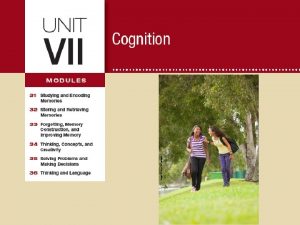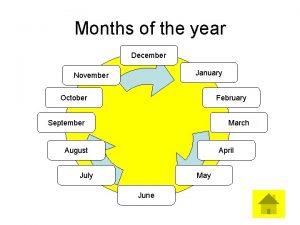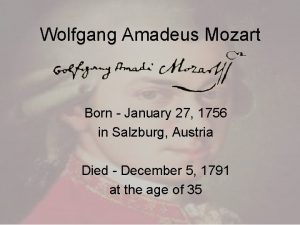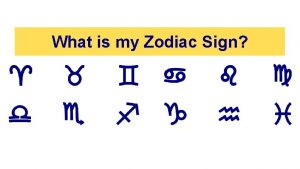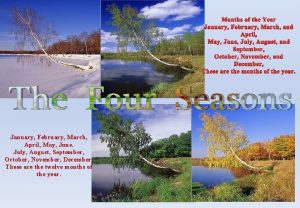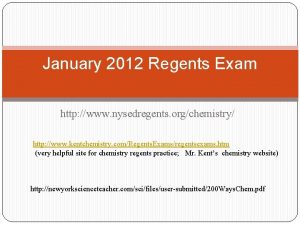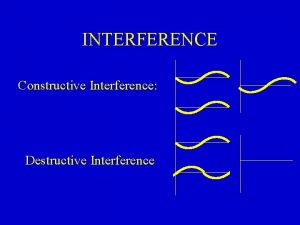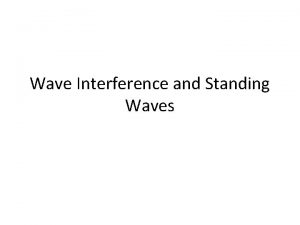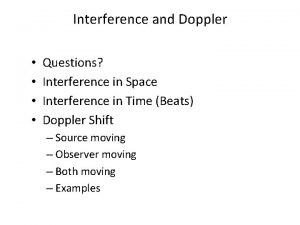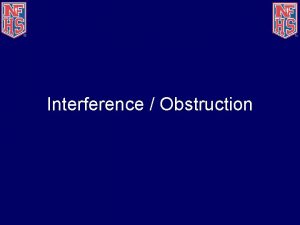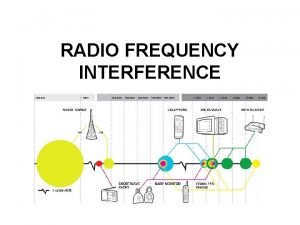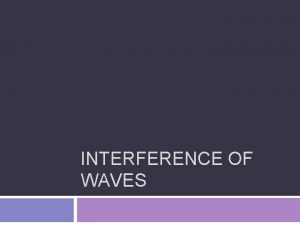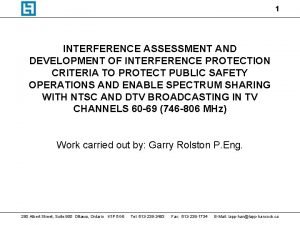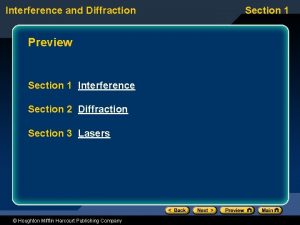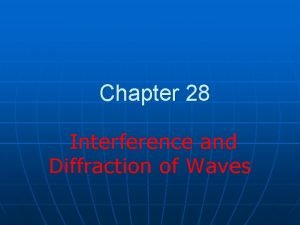3 3 Interference and Diffration Interference 12 January












- Slides: 12

3. 3 Interference and Diffration Interference 12 January 2022 Textbook pages: Title: Aims: Textbook pages: Key vocab: Key concepts: Interference Describe the origin of interference patterns using Young’s Double Slit experiment and explain the conditions for maxima and minima Contructive, destructive � When two (or more) waves meet, interference effects may be met. Key equations: Progress in topic: 1

3. 3 Interference and Diffration Interference 12 January 2022 Textbook pages: Demonstrating Interference �Laser Speckle – bright and darker patches of light �Bubble – only one colour is seen – the colour with a wavelength matching the thickness of the bubble �Tuning forks – each fork is a source of sound, so two waves are made. They can constructively and destructively interfere �Two sound sources – what do you notice as you walk in front of the speakers? �Why does this happen? 2

3. 3 Interference and Diffration Interference 12 January 2022 Textbook pages: Review - Diffraction � Through a gap width less than the wavelength of the light, the light will diffract with a pattern as shown. � By considering lines from the gap to the screen at different angles, at a given point in time, the incident wave may be either at maximum or minimum displacement. 3

3. 3 Interference and Diffration Interference 12 January 2022 Textbook pages: Young’s two-slit experiment � Young’s two-slit experiment is perhaps one of the most famous experimental arrangements in physics. � It was inspired by Young’s discovery of interference that he related in May 1801: “Given a pond with a canal connected to it. At two places in the pond waves are excited. In the canal two waves superpose forming a resultant wave. The amplitude of the resultant wave is determined by the phase difference with which the two waves arrive at the canal. ” (resourcefulphysics. org) 4

3. 3 Interference and Diffration Interference 12 January 2022 Textbook pages: Young’s Double Slit experiment: Interference – how it happens 5

3. 3 Interference and Diffration 12 January 2022 Interference Textbook pages: Path difference Difference lengths, by simple trigonometry. Red = 5λ Blue = 5. 25λ � Path difference is the difference between the distance (measured in m) travelled by two waves meeting at a point. � The path difference is a measure of how much ‘out of synch’ one wave is to another, expressed as a proportion of a wavelength, or a distance in meters � It is similar to phase difference in that by determining the path difference the conditions for constructive or destructive interference can be identified. 6

3. 3 Interference and Diffration Interference 12 January 2022 Textbook pages: Young’s two-slit experiment: maxima �Why is there a bright central ‘fringe’? ◦ The light has travelled the same distance, therefore there is no path difference and so the light arrives in phase. Their displacement add to give a bright fringe. �What do the next bright fringes represent? ◦ The light has travelled different distances, with a path difference equal to . When the path difference equals the wavelength, the phase difference is 0 again. (resourcefulphysics. org) 7

3. 3 Interference and Diffration Interference 12 January 2022 Textbook pages: Young’s two-slit experiment: minima �Why is there a dark fringe in between? ◦ One ray has travelled /2 further than the other, so they are out of phase and interfere destructively. ◦ Destructive interference means they ‘cancel out’. (resourcefulphysics. org) 8

3. 3 Interference and Diffration Interference 12 January 2022 Textbook pages: Conditions for minima and maxima �For maxima, the path difference should be: �nλ where n = 0, 1, 2, 3, …, n �For minima, the path difference should be: �(n-½) λ where n = 0, 1, 2, 3, …, n (resourcefulphysics. org) 9

3. 3 Interference and Diffration 12 January 2022 Interference Textbook pages: The Equation w s D � 10

3. 3 Interference and Diffration Interference 12 January 2022 Textbook pages: Young’s two-slit experiment �What happens if… ◦ We use slits with a smaller separation? ◦ We move the slits closer to the screen? �How could this experiment be used to measure the wavelength of light? (resourcefulphysics. org) 11

3. 3 Interference and Diffration Interference 12 January 2022 Textbook pages: Young’s two-slit experiment �A modern version of the Young’s Two Slit experiment was voted the ‘most beautiful experiment in physics’ in a Physics World readers’ poll in 2002. It still forms the basis of ongoing research into the fundamental quantum nature of matter. � As early as 1909, it was established that fringes were found even if the source was so faint that only one photon at a time was in the apparatus. � Fringes can also be seen using de Broglie (or matter) waves. � The most massive particles used to generate fringes to date (March 2005) are fluorinated buckyballs C 60 F 48 (i. e. 1632 mass units). (resourcefulphysics. org) 12
 Retroactive vs proactive interference
Retroactive vs proactive interference Retrospective interference
Retrospective interference December november october
December november october May june july
May june july Mozart nationality
Mozart nationality Zodiac for january 20
Zodiac for january 20 4 january 1643
4 january 1643 January february march season
January february march season January february maruary
January february maruary January 2018 chemistry regents
January 2018 chemistry regents January 2012 chemistry regents
January 2012 chemistry regents January 2012 chemistry regents answers
January 2012 chemistry regents answers January starts the year poem risa jordan
January starts the year poem risa jordan

